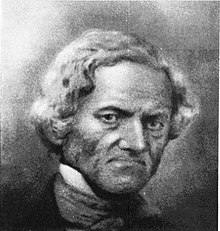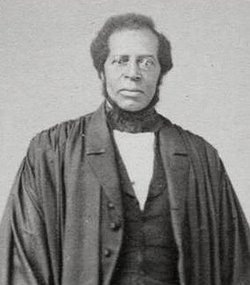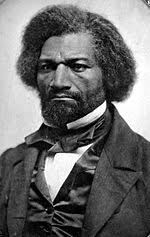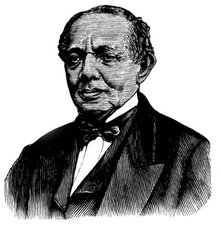Tag: Abolition

Delany was as an abolitionist, journalist, writer and medical doctor. He was also among the earliest black nationalists and was one of the most vocal of voices during the Civil War era. He was a leading in recruiting African American men to join the USCT. He was given the rank of major for a field unit in the U.S. Army by Abraham Lincoln. Delany became the first black man to achieve such rank. A historical marker for Delany is at 5PPG Place, 3rd Avenue and Market, Pittsburgh.

A Philadelphia community leader, abolitionists, and an education and civil rights activist, Burr was among the African American gentlemen who signed the broadside to recruit United States Colored Troops in Philadelphia, along with Robert Purvis, William T. Catto and William's son, Octavius. Burr was an organizer in the Underground Railroad, working in support of the Pennsylvania Anti-Slavery Society. He was among the people, who raised funds for the defense of the Christiana Resistance men, who were tried for treason for not obeying the Fugitive Slave Law of 1850. He is believed to be the son of Aaron Burr,...

Born free in South Carolina, Daniel came North at an early age and was initially a school teacher in Philadelphia before he left his connection with the Methodist church and joined the African Methodist Episcopal church. In 1852, he was elected AME bishop and his tenure was called the most significant since that of Richard Allen’s, the church founder. It was Payne who purchased Wilberforce College in 1863 from white Methodists and made it the first black college in the US. Payne served as its president. Daniel is recognized for his work that not only improved the...

Asher grew up as a third-generation free black, one of few blacks in North Branford, Connecticut to receive a formal education as a child. For nine years Asher pastored the Providence congregation. In time, he became well-known in black Baptist circles in the North, receiving invitations to pastor a number of black congregations. He finally accepted one of the calls, that of the Shiloh Baptist Church of Philadelphia. Asher became a prominent Baptist minister in the city of Philadelphia. On December 2,1859, 400 people gathered at his church to pray for John Brown at the time of Brown's scheduled...

At O.V. Catto's death, Henry Highland Garnett gave one of the most memorable eulogies to him at his New York City church, Shiloh Presbyterian Church. This event was covered in the New York Times. Garnett, who was a classmate of Charles Reason, the first Institute for Colored Youth principal to mentor Catto, also became one of Catto's national activist associates, working together in the National Equal Rights League with Frederick Douglass. In the U.S. Capitol, painted on the ceiling, is a picture of Garnett with Horace Greeley, celebrating the passage of the 15th Amendment, which granted voting rights to...

Arguably the most well-known 19th century anti-slavery and equal rights activist, Douglass spent considerable time in Philadelphia and was well connected in the African American community, as well as among white Republicans and the Union League. Douglass work with Philadelphians on black troop recruitment and his name appears on the "Men of Color of Philadelphia" recruitment poster. As a leader in the National Equal Rights League, Douglass worked with Catto to extend voting and citizenship rights to black men. Douglass was among the black leaders recognized by the Union League for their success in 1869. A Pennsylvania historical marker...

Lucretia (1793- 1880) and James (1788 - 1868) Mott were a power couple. By the time of the Civil War, Lucretia and James Mott were elder statespersons in the abolition movement. Lucretia also became a leading voice for women's suffrage, and she and James attended the first Women's Rights Convention at Seneca Falls. Both were supporters of John Brown and cared for Mary Brown in their home in Philadelphia after John Brown was hanged at Harper's Ferry. The training camp for black troops, Camp William Penn, was built on land owned by Union League member Edward M. Davis, the...

The granddaughter of Cyrus Bustill, a founder of the Free African Society in 1787 in Philadelphia, Sarah Mapps was an educator, writer, public lecturer, amateur artist, and abolitionist. As an artist, she often put painted images on her signed letters. Many examples of these survive today and are the earliest surviving examples of signed painting by an African American woman. At one time Sarah considered becoming a medical doctor and was the first African American women to attend the Women's Medical College in Philadelphia. After a year, she changed directions and became a teacher at the Institute for Colored...

Whipper believed in nonviolence and rational persuasion as a way to achieve social reform. He was a prominent member of Philadelphia's African American community. In 1835, he became one of founding fathers of the Antislavery American Moral Reform Society. Whipper's ideology regarding antislavery was very different than most people. He believed that prejudice against blacks came from the condition in which black people were in, not due to the color of their skin. A very successful businessman with his partner Stephen Smith, Whipper focused his efforts in helping black people to improve their status in society through education and...

Many people in the 19th century, who were against slavery, also believed that the freed people should leave the United States for Africa or the Caribbean. Not John Brown. He believed that the "Golden Rule" applied to all people and that the founding document of the United States, the Declaration of Independence, was meant for everyone. Brown also believed slavery was such an evil that it should be ended by any means necessary. In believing that all people should be free and treated equally and with respect,Brown addressed all individuals as Mister or Miss, regardless of their race or...

